Welcome to the insightful world of Customer Journey Map Templates! Whether you’re an established e-commerce giant or a budding neighborhood cafe going digital, crafting a precise map of your customer’s journey is an absolute must. ?
These best-in-class templates are your steadfast allies in achieving two primary goals:
- Pinpointing each customer touchpoint – helping you understand interactions and emotions at each stage.
- Identifying opportunities for improvement – enabling you to elevate the overall customer experience.
But the power doesn’t stop there. When complemented by Plerdy’s robust UX & SEO analysis, these templates offer a nuanced understanding of your website’s performance, bringing into focus the areas that delight and those that deter.
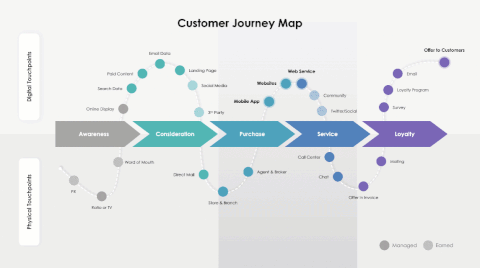
So, buckle up for a journey into the core of customer satisfaction with these top-notch templates. Here’s to mapping your way to unprecedented customer delight!
What Is Customer Journey Mapping?
Unleashing the potential of customer journey mapping offers a profound edge in today’s competitive business landscape. It’s a powerful tool – a visual story of your customer’s interactions with your brand. With a well-crafted map, you’re privy to insights regarding each touchpoint – from initial contact through engagement to long-term loyalty.
Let’s dive into an example from the niche of boutique hotels:
- Discovery – A couple seeking a unique vacation experience stumbles upon your website via a blog post.
- Research – They dig deeper into your offerings, read reviews, and compare prices.
- Booking – The couple decides to reserve a room, which is easily done through your user-friendly site.
- Stay – The couple enjoys excellent service during their stay.
- Post-Stay – They receive a personalized thank-you note encouraging them to return.
By understanding this journey, you can fine-tune interactions to enhance customer satisfaction. In short, customer journey mapping – is an irreplaceable tool to elevate your customer experience.
Customer Journey Analysis With Plerdy
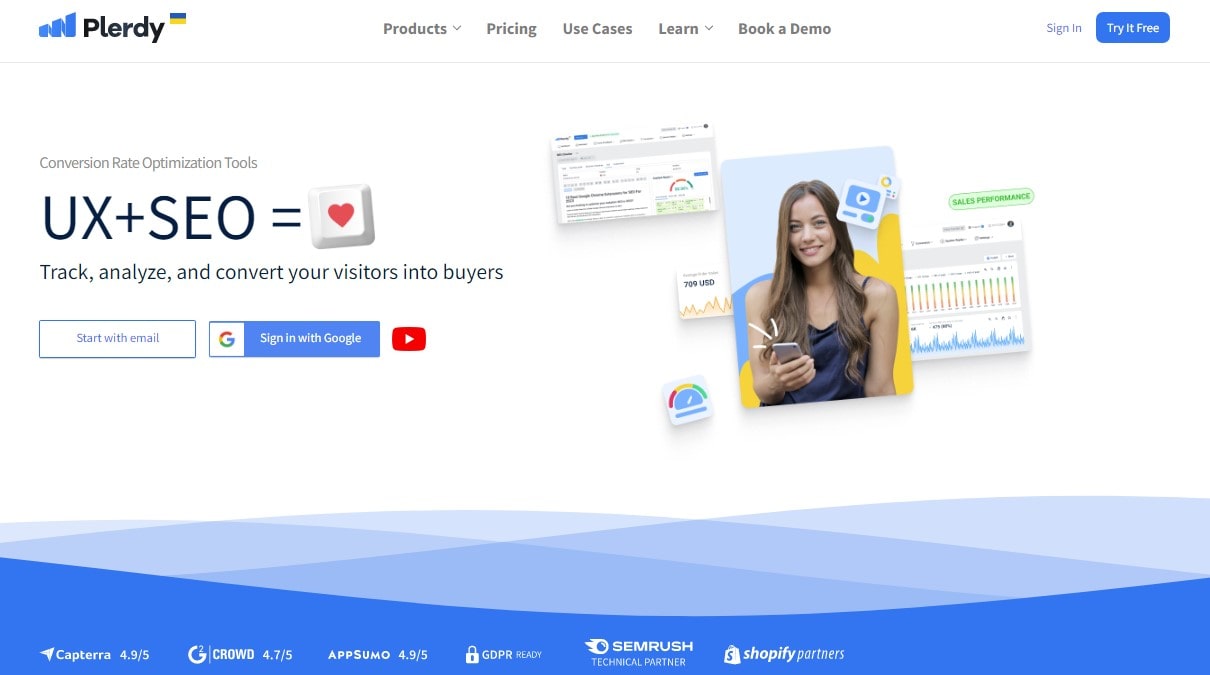
Piercing through the surface of customer behavior, Customer Journey Analysis with Plerdy is key to unlocking uncharted realms of customer experience. Plerdy’s features provide a comprehensive blueprint – your customer journey map.
Consider an e-commerce fashion boutique as an example. With Plerdy, you get a crystal-clear understanding of your customer’s path. You can scrutinize the flow, highlighting areas of interest and potential pitfalls. You grasp how the customer:
- Stumbles upon your online store via a social media ad.
- Delves into your product assortment, favoring bespoke suits.
- Experiences your easy checkout process, appreciating the seamless experience.
- Receives timely updates about shipping – establishing trust.
- Decides to return, enticed by a personalized email campaign.
Understanding this map lets you hone in on areas ripe for improvement – raising customer satisfaction, fostering loyalty, and boosting revenue. Then, tailor your strategies based on the insights from Plerdy’s customer journey analysis. In a nutshell, with Plerdy, you’re no longer shooting in the dark – you’re illuminating the path to greater customer-centric success.
Want To Know How Customers Interact With Your Website?
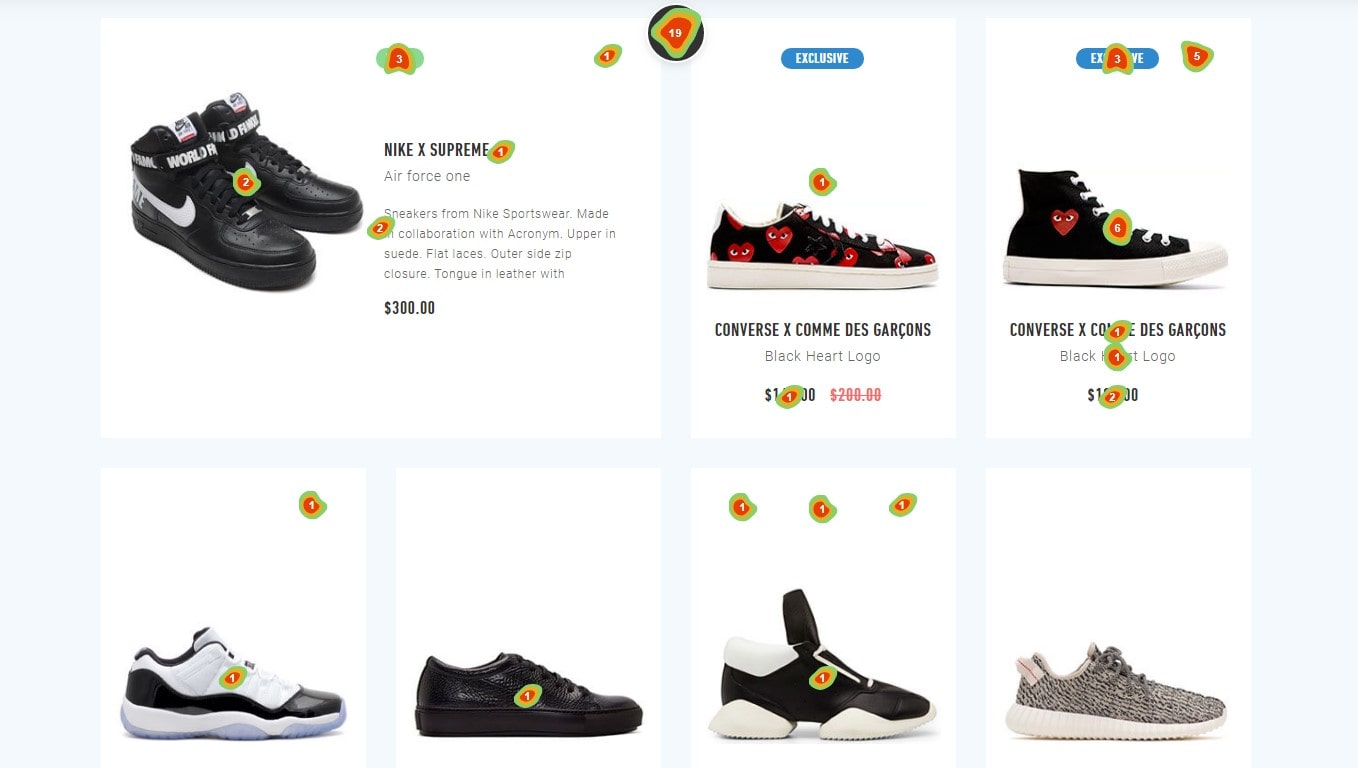
Unveiling your customer’s true website interaction is key to successful digital marketing. Thankfully, creating a customer journey map can provide this coveted clarity.
For instance, let’s consider a fledgling online bookstore. The interactive map reveals the customer’s voyage, tracing every click and scroll – charting an online narrative as compelling as the novels you sell. With the customer journey map, you’re able to trace how your reader:
- Lands on your site via a review link on a literary blog.
- Peruses your curated book collections, marking several titles for future reference.
- Effortlessly navigates to the checkout and purchases a novel.
- Receives a timely dispatch notification, reinforcing their confidence in your brand.
- Returns are driven by a personalized reading recommendation email.
This comprehensive view offers invaluable insights, leading to tangible improvements in user experience. Crafting a customer journey map puts you in your customer’s shoes – revealing the path to optimal site engagement.
The Benefits Of Customer Journey Mapping
![]()
Navigating the path to customer satisfaction becomes smoother with a customer journey map in your toolkit. This powerful asset sheds light on touchpoints, sparks service improvement, and enriches your understanding of customer needs.
Take an artisanal coffee shop that’s ventured online. A detailed map uncovers various facets of their customer journey, revealing:
- How a caffeine lover discovers your site via a coffee enthusiast forum.
- The exploration of your diverse bean selection, pausing at fair-trade options.
- The smooth order placement through your streamlined site.
- Their anticipation grew with order updates, building brand trust.
- The thrill of opening a well-packaged delivery leads to repeat purchases.
You can refine your approach by harnessing these insights, ensuring each touchpoint offers a customer-centric experience. For example, with a well-crafted customer journey map, you don’t merely serve coffee – you create a community of satisfied, loyal, and recurring customers.
Types Of Customer Journey Maps And Examples
In the expansive terrain of customer journey mapping, different map types serve varied purposes, each providing a unique lens to view your customer’s interactions.
Firstly, the Current State map lays bare the reality of your customer’s experience today. For instance, a tech start-up might use this to understand how users navigate their SaaS platform – from initial sign-up to leveraging advanced features.
Then, there’s the Future State map – a visionary projection of an ideal customer experience. For example, suppose the tech start-up aspires to enhance its customer support. This map could illustrate a desired pathway, from a troubleshooting issue to a seamless solution via a state-of-the-art AI chatbot.
Finally, a Day in the Life map takes a holistic approach. It’s not restricted to interactions with your business – it zooms out to encompass a customer’s daily life. For example, the tech start-up might track a remote worker’s day, noting:
- Waking up and checking work emails.
- Using the SaaS platform for team collaboration.
- Experiencing a glitch and reaching out for support.
- Receiving prompt assistance and continuing work.
By opting for the appropriate type of customer journey map, you’ll uncover insights tailored to your specific goals – empowering you to propel your customer experience to new heights.
1. Define Your Customer Personas

You need to know who they are to make a customer journey map that truly shows what your customers go through. By delving into their demographics, behaviors, and preferences, you can tailor your strategies to meet their needs and enhance their overall journey.
The Power of Well-Defined Customer Personas
Comprehensive customer personas pave the way for better decision-making and targeted marketing efforts. It allows you to zero in on your audience’s preferences and offer solutions that resonate with them. Honing your customer personas unlock valuable insights that drive success.
Key Elements of a Robust Customer Persona
- Demographics: Identity age, gender, location, income, and other crucial demographic data to form a solid foundation for your persona.
- Behaviors: Uncover the habits, preferences, and patterns that drive customer actions, such as browsing habits or purchasing frequency.
- Goals and motivations: Dig deep into your customers’ desires and aspirations to better understand what drives them towards your products or services.
- Pain points: Recognize your customers’ challenges, enabling you to address their concerns and provide tailored solutions.
- Communication preferences: Determine the most effective channels for reaching and engaging your target audience.
How Agencies Benefit from Well-Defined Customer Personas
- Targeted messaging: Craft personalized marketing campaigns that resonate with your audience and boost conversion rates.
- Improved product development: Design products or services that align with your customer’s needs and expectations.
- Customer segmentation: Group customers based on preferences, allowing for more effective targeting and resource allocation.
- Enhanced customer experience: Deliver exceptional experiences by understanding the unique needs of your customers and catering to them.
- Data-driven decisions: Make informed business decisions based on insights from customer personas.
Defining your customer personas is essential in creating a perfect customer journey map. By understanding your audience’s unique characteristics and preferences, you’ll be well-equipped to optimize their journey and drive long-term success for your business.
2. Identify Customer Touchpoints

Uncovering customer touchpoints is crucial to creating a comprehensive customer journey map. By recognizing all interactions between your customers and your brand, you’ll be better equipped to optimize their experience and drive satisfaction.
The Significance of Customer Touchpoints
Customer touchpoints are the moments customers engage with your brand across various channels. These interactions can profoundly impact their perception of your business, shaping their overall journey. Identifying and optimizing touchpoints foster positive experiences and strengthen customer relationships.
A Wide Array of Touchpoints
Customer touchpoints span numerous channels and stages of the customer journey. From initial contact to ongoing support, it’s essential to recognize every interaction to ensure a seamless experience. Here are some common touchpoints to consider:
- Awareness: Social media posts, online ads, blog articles, and search engine results
- Consideration: Product reviews, comparison websites, and email newsletters
- Purchase: E-commerce website, in-store shopping experience, and customer service interactions
- Retention: Follow-up emails, loyalty programs, and customer feedback surveys
- Advocacy: Referral programs, online reviews, and social media sharing
Optimizing Touchpoints for a Better Customer Journey
To enhance your customer journey, follow these steps:
- First, map the touchpoints: Identify and list all customer interactions with your brand.
- Prioritize: Determine the most critical touchpoints that have the most significant impact on customer satisfaction and conversions.
- Analyze: Gather data and feedback to evaluate the performance of each touchpoint.
- Optimize: Implement improvements based on your analysis and monitor the results.
In conclusion, identifying customer touchpoints is an indispensable step in developing an effective customer journey map. By recognizing and optimizing these interactions, you’ll create a seamless experience that leaves a lasting impression on your customers, ultimately bolstering their loyalty and satisfaction.
3. Map the Customer Journey Stages

Mapping the customer journey stages is essential to creating an effective journey map. By breaking down the customer experience into distinct phases, you’ll better understand how customers interact with your brand, allowing you to optimize their journey and enhance satisfaction.
The Importance of Customer Journey Stages
The stages of a customer journey serve as a roadmap to navigate the complexities of customer interactions. By identifying each stage, you’ll be better equipped to pinpoint areas of improvement, streamline the customer experience, and foster long-lasting relationships.
Typical Stages of a Customer Journey
While the specific stages may vary depending on your business and target audience, most customer journeys can be divided into the following key phases:
- Awareness: Customers become aware of your brand through various channels, such as social media, online ads, or word-of-mouth referrals.
- Consideration: Customers research your products or services, comparing them to competitors and gathering information to make an informed decision.
- Purchase: Customers complete a transaction, either online or in-store, and interact with your brand through the buying process.
- Retention: Customers continue to engage with your brand after purchasing, receiving support and taking advantage of loyalty programs.
- Advocacy: Satisfied customers become brand advocates, sharing their positive experiences with others and potentially referring new customers.
Mapping Customer Journey Stages: A Step-by-Step Approach
To effectively map your customer journey stages, follow these steps:
- First, outline the stages: Define the stages of your customer journey most relevant to your business and audience.
- Identify touchpoints: Recognize the various touchpoints within each stage, detailing how visitors interact with a website.
- Gather data: Collect quantitative and qualitative data better to understand customer behavior and preferences at each stage.
- Analyze: Evaluate your findings, identifying patterns and areas for improvement.
- Implement changes: Make strategic adjustments based on your analysis, and monitor their impact on the customer journey.
In conclusion, mapping the customer journey stages is vital to creating a comprehensive journey map. By understanding each phase of the journey, you’ll be well-positioned to optimize the customer experience, driving satisfaction and fostering long-term loyalty.
4. Incorporate Customer Goals and Motivations

Incorporating customer goals and motivations at each journey stage is vital to create an effective journey map. By understanding what motivates your clients, you can customize your strategy to fit their wants and desires, creating a personalized and memorable experience.
The Significance of Customer Goals and Motivations
Customer goals and motivations are the driving forces behind their actions and decisions. By incorporating these insights into your customer journey map, you can better predict and influence their behavior, enhancing satisfaction and loyalty.
Key Customer Goals and Motivations to Consider
Some common customer goals and motivations include:
- Convenience: Customers seek a seamless, hassle-free experience that allows them to quickly find and purchase the products or services they need.
- Quality: Customers value high-quality products or services that meet or exceed expectations.
- Value for money: Customers appreciate competitive pricing and want to feel they are getting the best bang for their buck.
- Personalization: Customers desire personalized experiences tailored to their unique preferences and needs.
- Emotional connection: Customers are drawn to brands that evoke positive emotions or resonate with their values and beliefs.
Integrating Customer Goals and Motivations into Your Customer Journey Map
To successfully weave customer goals and motivations into your customer journey map, follow these steps:
- Identify goals and motivations: Determine the primary objectives and desires driving your customers at each journey stage.
- Analyze customer feedback: Collect and review it to gain insights into their goals and motivations.
- Tailor strategies: Adjust your strategies to align with your customer’s goals and motivations, ensuring a personalized experience.
- Measure success: Monitor key performance indicators (KPIs) to assess the effectiveness of your strategies in meeting customer goals and motivations.
For a genuinely tailored experience, your customer journey map must include consumer goals and motivations. Understanding and catering to these driving forces can help enhance the client’s journey, increasing happiness and loyalty.
5. Capture Customer Emotions

In creating a truly meaningful customer journey map, capturing customer emotions is paramount. By understanding and empathizing with the emotions customers experience at different touchpoints, businesses can better anticipate their needs and deliver exceptional experiences that resonate on a deeper level.
The Impact of Customer Emotions
Customer emotions play a significant role in their decision-making process and overall experience with a brand. Positive emotions can foster loyalty and advocacy, while negative emotions may lead to dissatisfaction and churn. Incorporating emotions into your customer journey map allows you to address customer pain points better and capitalize on opportunities to delight them.
Methods to Capture Customer Emotions
Consider the following techniques to capture customer emotions effectively:
- Customer feedback: Collect and analyze customer feedback through surveys, interviews, and social media platforms.
- Sentiment analysis: Use sentiment analysis tools to evaluate customer emotions based on written communication, such as reviews or chat logs.
- Ethnographic research: Conduct observational studies or in-depth interviews to understand customers’ emotions in real-time as they interact with your brand.
Key Emotions to Include in Your Customer Journey Map
Some common emotions to consider when mapping your customer journey include:
- Excitement: The anticipation of discovering a new product or service
- Frustration: Difficulty navigating a website or encountering poor customer service
- Satisfaction: Successfully finding the desired product or service at a fair price
- Disappointment: Unmet expectations or negative experiences
- Loyalty: A sense of trust and commitment to a brand
In summary, capturing customer emotions is vital to building an authentic and actionable customer journey map. By understanding the emotions experienced at each touchpoint, businesses can develop strategies to address pain points, enhance customer satisfaction, and foster long-lasting relationships. Putting the customer’s emotions at the heart of your journey map creates a powerful tool for driving positive change and delivering exceptional customer experiences.
6. Use Visual Elements for Clarity

Harnessing the power of visual elements is crucial for crafting an effective customer journey map. By utilizing visuals, you can create a clear and engaging representation of your customer’s experience, making it easier for your team to identify opportunities for improvement and drive meaningful change.
The Role of Visuals in Customer Journey Maps
Visual elements enhance customer journey maps by:
- Facilitating understanding: Visuals help break down complex information and processes, making it easier for stakeholders to grasp key insights.
- Aiding memory retention: The human brain processes visuals more effectively than text, so incorporating visuals increases the likelihood of stakeholders retaining the information.
- Encouraging collaboration: A visually appealing map invites discussion and collaboration, fostering a sense of ownership among team members.
Types of Visual Elements to Consider
Incorporate a mix of the following visual elements to add clarity and depth to your customer journey map:
- Icons: Represent various touchpoints, channels, or customer emotions using simple and recognizable icons.
- Colors: Use color coding to differentiate between customer journey stages, channels, or emotions, allowing for easier navigation and interpretation.
- Charts and graphs: Include data-driven visuals such as bar charts or line graphs to showcase trends or quantitative insights.
- Images: Incorporate relevant images or photographs to humanize the customer journey and evoke empathy among team members.
Tips for Effectively Using Visual Elements
Consider the following advice to ensure that the visual components of your client journey map have a possible impact:
- Keep it simple: Avoid overloading your map with visuals that could detract from its primary purpose.
- Be consistent: Use visual language throughout the map to maintain coherence and readability.
- Tailor visuals to your audience: Understand the preferences and needs of your stakeholders and select visual elements that resonate with them.
By incorporating visual elements into your customer journey map, you’ll create a more engaging and accessible tool enabling your team to understand customer experiences better, identify improvement areas, and ultimately deliver a more satisfying customer journey. Remember, a picture is worth a thousand words – so use visual elements wisely to bring your customer journey map to life.
7. Incorporate Quantitative and Qualitative Data
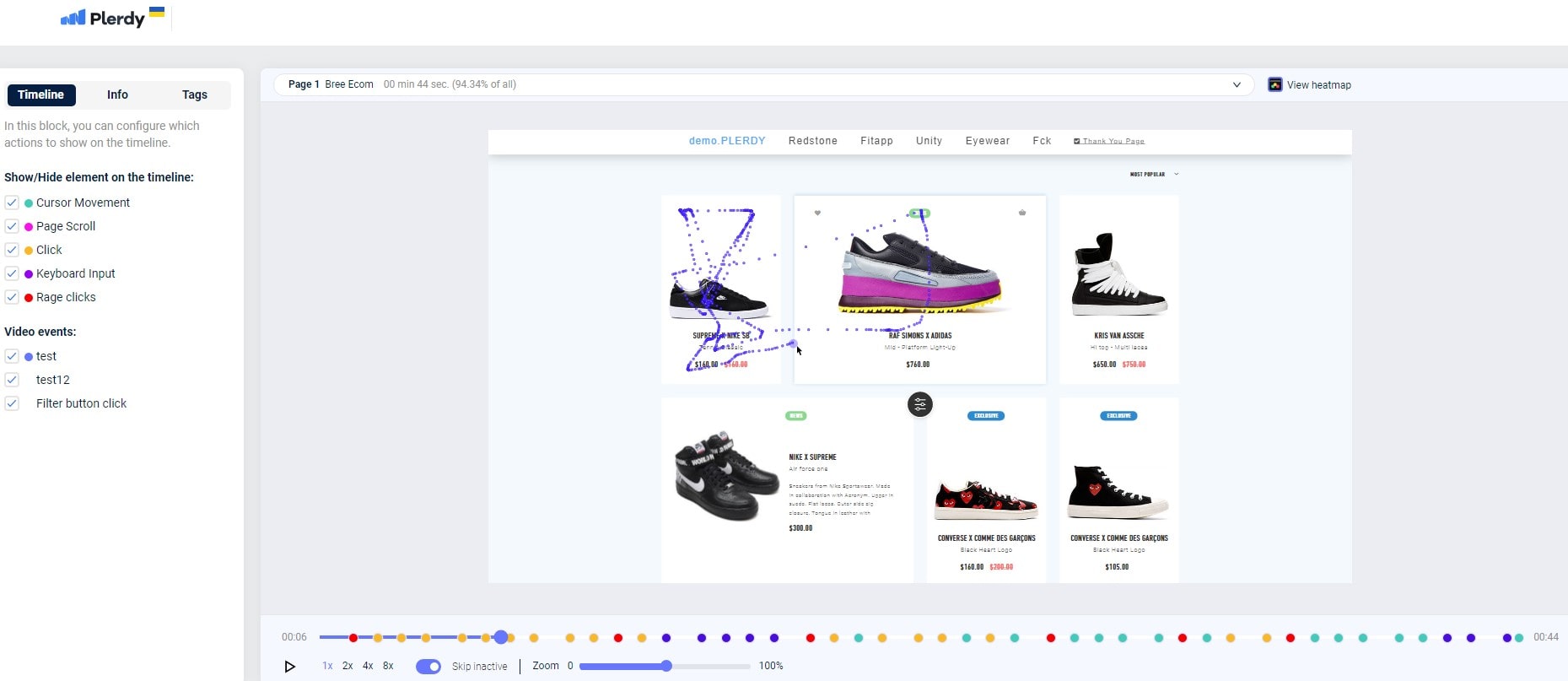
A robust customer journey map relies on quantitative and qualitative data to comprehensively understand your customer’s experiences. Integrating both data types create a more accurate and actionable representation of the customer journey, enabling your team to make informed decisions and drive improvements.
The Power of Data in Customer Journey Maps
The following are some of the benefits that come from incorporating quantitative and qualitative data into your client journey map:
- Identify trends and patterns in customer behavior
- Uncover underlying motivations and pain points
- Quantify the impact of customer interactions
- Pinpoint areas for improvement or investment
Blending Quantitative and Qualitative Data
To create a well-rounded customer journey map, consider the following data sources:
- Quantitative Data: This type includes measurable and numerical information, such as website analytics, purchase data, or customer service metrics. It provides a solid foundation for understanding customer behavior and tracking performance.
- Qualitative Data: This data consists of non-numerical information, such as customer feedback, surveys, or interviews. It offers valuable insights into customer motivations, emotions, and preferences, helping you uncover the “why” behind the numbers.
Tips for Effectively Incorporating Data into Your Customer Journey Map
To successfully integrate quantitative and qualitative data in your map, follow these guidelines:
- Use data visualization: Incorporate charts, graphs, or other visual elements to represent data effectively and make it easily digestible.
- Prioritize relevant data: Focus on data directly related to the customer journey with your business objectives.
When you correctly use quantitative and qualitative data in your customer journey map, you can find useful insights, get a full picture of your customer’s experience, and give your team the power to make choices that will improve the customer journey based on the data.
8. Create a Cross-functional Team

Constructing a cross-functional team to work on your customer journey map is essential for ensuring that every aspect of your business is considered. You can foster collaboration, fuel innovation, and ultimately deliver a superior customer experience by bringing together individuals with diverse skills and perspectives.
The Value of a Cross-functional Team in Customer Journey Mapping
A cross-functional team offers numerous benefits, including:
- A comprehensive understanding of the customer journey, as various departments contribute their unique insights
- Enhanced collaboration and communication across different business units
- The ability to identify and address gaps or inefficiencies in the customer journey more effectively
Building an Effective Cross-functional Team
When assembling your cross-functional team, consider including representatives from the following departments:
- Marketing: This team will provide insights into customer acquisition strategies and channels, helping to shape the early stages of the customer journey map.
- Sales: Sales representatives can offer valuable input on the customer’s decision-making process, highlighting potential opportunities for improvement.
- Customer Support: With a wealth of customer interaction experience, the customer support team can identify common pain points and suggest solutions for enhancing the customer experience.
- Product Development: This team can offer insights into the product’s features and usability, contributing to a more in-depth understanding of customers.
By working together, this cross-functional team can create a customer journey map that truly reflects the entire customer experience – from initial awareness to post-purchase support. With all key departments working and sharing insights, your company can optimize the customer journey, enhancing customer satisfaction, loyalty, and business growth.
9. Test and Validate Your Map

After crafting your customer journey map, the next crucial step is to test and validate its accuracy. This process helps you ensure the map reflects the customer experience, enabling you to make informed decisions and adjustments to optimize your business strategy.
Test and Validate: A Methodical Approach
To effectively test and validate your customer journey map:
- Collect feedback: Gather input from customers and employees who interact with them regularly. This feedback can highlight areas where the map may need to accurately depict the customer experience or where improvements can be made.
- Analyze data: Examine quantitative and/or qualitative data to identify patterns, trends, and discrepancies. This information can help you pinpoint gaps or inconsistencies in the customer journey and inform necessary revisions.
- Conduct usability testing: To truly understand how customers navigate your journey, engage in usability testing. Observe customers interacting with websites or services, noting any difficulties or frustrations.
- Iterate and refine: Adjust your map based on the insights gathered during testing and validation. This iterative process helps you create a more effective representation of the customer journey.
Key Metrics for Testing and Validation
To thoroughly assess your customer journey map, track the following key performance indicators (KPIs):
- Customer satisfaction scores (CSAT)
- Net Promoter Score (NPS)
- Customer Effort Score (CES)
- Conversion rates
- Churn rates
These metrics can provide valuable insights into the overall effectiveness of your customer journey map, guiding you in making data-driven decisions to enhance the customer experience.
By dedicating time and resources to testing and validating customer journey maps, you can uncover opportunities for improvement and better align your business strategies with customer needs.
10. Update Your Map Regularly
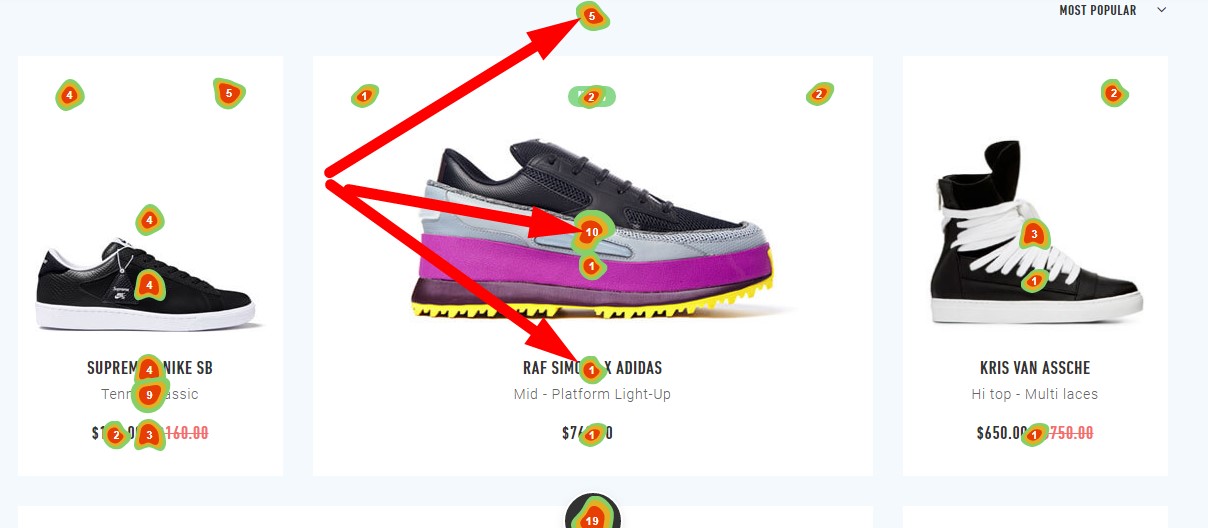
In today’s fast-paced business landscape, regularly updating your customer journey map cannot be overstated. Continuously refining your map helps you stay in tune with your customers’ evolving needs and expectations, ensuring your strategies remain relevant and effective.
The Importance of Regular Updates
As customer preferences, market trends, and industry dynamics shift, so too should your customer journey map. By keeping your map up to date, you can:
- Identify emerging pain points and opportunities for improvement
- Stay ahead of the competition by anticipating customer needs
- Make data-driven decisions that foster growth and success
- Maintain strong customer relationships through a deep understanding of their experiences
A Proactive Approach to Updating Your Map
To make the most of your customer journey map implement these best practices:
- Monitor key metrics: Monitor KPIs like customer satisfaction scores, churn rates, and conversion rates to detect any changes in customer behavior that may warrant a map update.
- Gather feedback: Encourage customers and employees to share their insights and experiences. This feedback can help you identify areas of the map that may need adjustment.
- Conduct regular reviews: Schedule periodic reviews of your customer journey map to assess its accuracy and effectiveness. Use these reviews as an opportunity to make necessary updates and refinements.
- Stay informed: Keep abreast of industry trends, competitor activities, and market changes that could impact your customers’ journeys. Then, adapt your map to ensure it remains a useful tool for your organization.
Updating your customer journey map will help you adapt to the changing business climate and meet client needs. In addition, this commitment to staying current will drive customer satisfaction and long-term success for your organization.
11. Use Digital Tools to Create and Manage Your Map
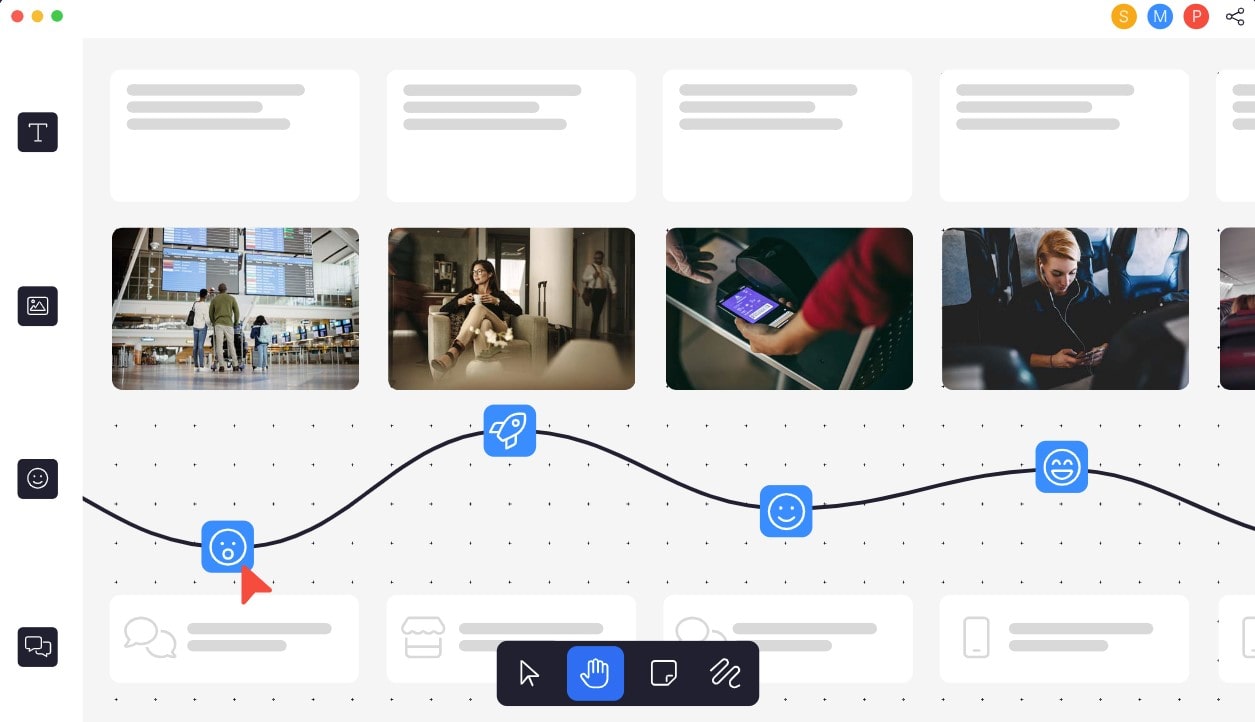
In today’s digital age, leveraging cutting-edge tools and software to create and manage your customer journey map is a no-brainer. These digital solutions streamline the process, provide valuable insights, and facilitate collaboration among team members. By tapping into the power of digital tools, you’ll be able to craft a comprehensive and dynamic map that accurately represents the customer journey and drives continuous improvement.
Digital Tools to Enhance Your Customer Journey Map
Many digital tools exist to help you design, analyze, and update your customer journey map. These tools offer a range of features that can elevate your mapping efforts:
- Visual mapping platforms: Software like Smaply, UXPressia, and Miro provide user-friendly interfaces for creating visually appealing maps that effectively communicate the customer journey.
- Analytics tools: Google Analytics, Mixpanel, and Adobe Analytics help you gather and analyze quantitative data to inform your map, ensuring it’s grounded in real-world customer behavior.
- Qualitative data sources: Survey platforms such as SurveyMonkey, Typeform, and Qualtrics make it easy to collect qualitative feedback from customers, providing valuable insights to inform your map.
- Collaboration tools: Project management platforms like Trello, Asana, and Monday.com enable cross-functional teams to collaborate on developing and managing the customer journey map, ensuring all stakeholders have a voice.
Reap the Benefits of Digital Tools
By integrating digital tools into your customer journey mapping efforts, you’ll be able to:
- Save time and effort by streamlining the mapping process
- Ensure your map is data-driven and informed by real customer experiences
- Foster collaboration and engagement among team members
- Easily update and refine your map to adapt to changing customer needs and market conditions
In summary, embracing digital tools is crucial for creating and managing an effective customer journey map.
12. Create an Action Plan Based on Your Map

A well-crafted customer journey map is a goldmine of insights, revealing opportunities to enhance the CX and drive business growth. However, the true value of this map lies in its ability to inspire action. Your customer journey map can help you capitalize on these opportunities and turn insights into action.
Steps to Develop a Robust Action Plan
Follow these steps to transform your customer journey map into a dynamic action plan:
- Identify key opportunities: Review your map and pinpoint areas where improvements can be made, whether streamlining processes, addressing pain points, or enhancing positive touchpoints.
- Prioritize initiatives: Evaluate the potential impact of each opportunity and prioritize initiatives based on their potential to drive customer satisfaction and overall business success.
- Assign responsibilities: Delegate tasks to relevant team members or departments, ensuring ownership and accountability for each initiative.
- Set measurable goals: Establish clear, quantifiable objectives for each initiative, enabling you to track progress and gauge success.
- Create a timeline: Outline a realistic timeline for each initiative, setting milestones and deadlines to keep your team on track and maintain momentum.
- Monitor progress: Regularly review the status of each initiative, addressing any roadblocks or challenges that arise and celebrating successes along the way.
- Iterate and refine: Continuously update and refine your action plan as you gather new insights and learn from your efforts, ensuring it remains relevant and effective.
Reap the Rewards of a Customer-centric Action Plan
You will be able to accomplish the following by creating and putting into action a strategic action plan that is based on your customer journey map:
- Deliver exceptional customer experiences at every touchpoint
- Foster stronger customer relationships and boost loyalty
- Improve internal processes and cross-functional collaboration
- Drive tangible results, from increased revenue to enhanced brand reputation
In conclusion, an action plan rooted in your customer journey map is a game-changing asset, enabling you to capitalize on opportunities and drive meaningful, customer-centric growth. So, don’t let your map gather dust – use it as the catalyst for change that it’s meant to be.
13. Share Your Map with Stakeholders
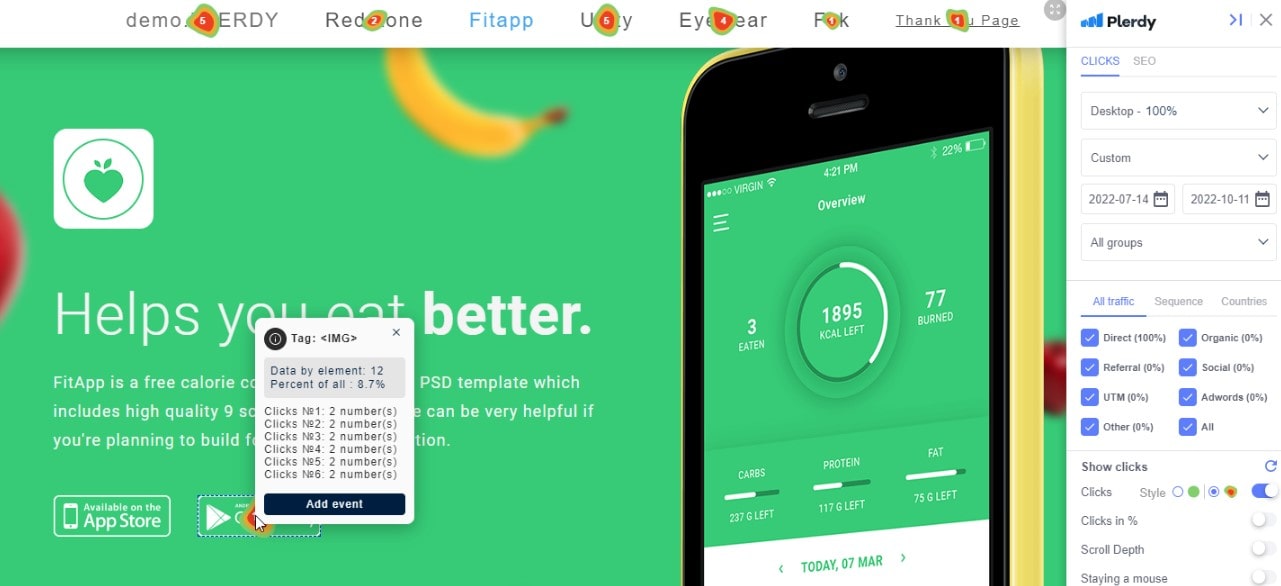
A customer journey map is a powerful tool for organizational change and improvement. However, to unlock its full potential, it’s crucial to share your map with relevant stakeholders, ensuring everyone is aligned and engaged in the pursuit of customer-centric growth.
Key Stakeholders to Include in the Process
When sharing your customer journey map, consider involving the following stakeholders:
- Executive leadership: Keep top-level decision-makers in the loop, as their buy-in and support are essential for driving strategic change.
- Department heads: Engage leaders from various departments, such as marketing, sales, customer support, and product development, to foster cross-functional collaboration.
- Frontline employees: Include those who interact directly with customers, as their insights and feedback can enrich your map and inform action plans.
- External partners: Share your map with external collaborators, like suppliers and distributors, to ensure a seamless customer experience across all touchpoints.
Tips for Effective Communication and Collaboration
To ensure your customer journey map resonates with stakeholders and inspires action, follow these best practices:
- Present a clear, visually appealing map: Opt for a user-friendly format that conveys your findings in an easily digestible manner, enabling stakeholders to grasp key data and opportunities quickly.
- Tell a compelling story: Use real-life customer examples to bring your map to life, making it more relatable and memorable for your audience.
- Facilitate open discussions: Encourage stakeholders to ask questions, share their perspectives, and contribute their expertise, fostering a collaborative environment where everyone feels invested in the process.
- Establish a follow-up plan: Outline the next steps, assign responsibilities, and set deadlines to ensure continued engagement and progress toward shared objectives.
In conclusion, sharing your customer journey map with stakeholders is vital in driving customer-centric change within your organization. By involving key players, fostering collaboration, and maintaining open communication, you can harness the power of your map to propel your business forward.
14. Monitor and Measure Success
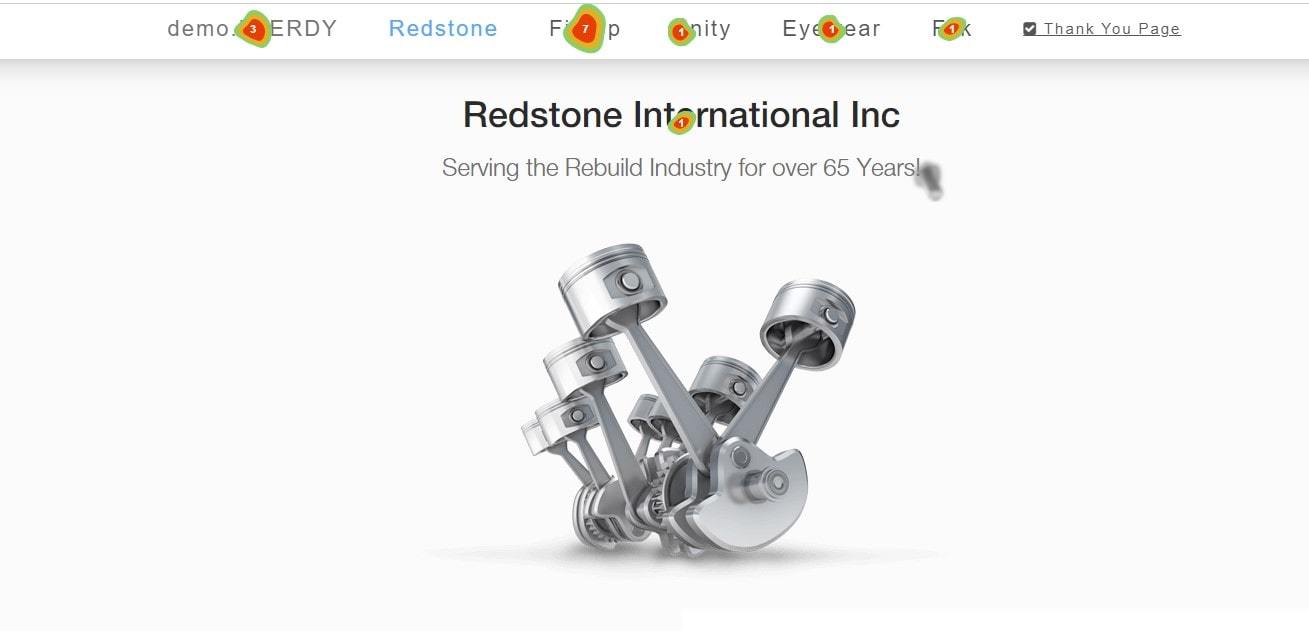
Effectively implementing a customer journey map requires continuous monitoring and measurement of success to ensure your efforts translate into tangible improvements in customer experience. By setting goals, tracking key performance indicators (KPIs), and fine-tuning your strategy, you can maximize the value of your map and drive customer-centric growth.
Establishing Goals and Selecting KPIs
Consider the following stages to arrive at an accurate evaluation of the success of your customer journey map:
- Set SMART goals: Establish Specific, Measurable, Achievable, Relevant, and Time-bound objectives that align with your overarching business goals and customer needs.
- Choose relevant KPIs: Identify metrics that reflect the progress toward your goals, such as customer satisfaction scores, Net Promoter Scores (NPS), or average resolution times.
Examples of KPIs to Monitor and Measure Success
Keep an eye on these KPIs to assess the impact of your customer journey map:
- Conversion rates: Track the percentage of prospects who complete a desired action, such as purchasing or signing up for a newsletter.
- Customer churn: Monitor the rate customers discontinue their relationship with your business.
- Customer lifetime value: Evaluate the net profit your organization derives from a customer over the entire relationship.
- First-contact resolution: Measure the percentage of customer issues resolved during the initial interaction with your support team.
- Customer feedback: Collect qualitative insights from surveys, reviews, and social media to identify trends and areas for improvement.
Continual Improvement and Adaptation
As you monitor and measure success, adapting and refining your strategy is crucial based on the data and feedback collected. Conduct regular reviews of your KPIs, discuss your findings with stakeholders, and adjust your action plan to optimize performance and ensure you’re meeting your goals.
Finally, customer journey maps require success monitoring and measurement. You can use your map to improve customer experience and growth by creating goals, tracking KPIs, and adjusting your strategy.
15. Learn from Industry Best Practices

Staying ahead in today’s competitive market requires continuous learning and adaptation. To create a truly great customer journey map, it’s essential to glean insights from industry best practices and leading examples. Doing so can inspire innovation, help you avoid common pitfalls, and ensure your map is powerful for driving customer satisfaction and loyalty.
Key Elements of Best-in-Class Customer Journey Maps
When examining industry-leading examples, pay attention to the following essential components:
- Empathy-driven: Top-notch customer journey maps place the customer at the center, focusing on understanding their needs, emotions, and motivations.
- Holistic perspective: Best practices highlight capturing the entire customer journey, from awareness to advocacy, to ensure no touchpoint is overlooked.
- Collaborative: Involving cross-functional teams in the map creation process fosters a customer-centric culture and ensures diverse perspectives are considered.
Gaining Inspiration from Notable Examples
Learn from leading organizations that have embraced customer journey mapping to achieve outstanding results:
- Apple: Known for its exceptional customer experience, Apple’s customer journey maps emphasize seamless integration across channels and personalized interactions at every touchpoint.
- Starbucks: The coffee giant’s detailed maps focus on delivering a consistent and enjoyable experience, regardless of location or platform.
Steps to Incorporate Industry Best Practices into Your Map
- Research: Investigate top-performing organizations within and beyond your industry to uncover insights and ideas.
- Analyze: Identify patterns, trends, and common themes among successful customer journey maps.
- Adapt: Tailor the best practices to suit your organization’s unique context and customer base.
- Implement: Integrate these insights into your map, continually refining your strategy as you learn and grow.
By studying industry best practices and learning from standout examples, you can elevate your customer journey map to new heights, ultimately driving a superior customer experience and unlocking long-term success.
Bottom Line
Drawing the curtain on our deep dive into the Best Customer Journey Map Templates, we can now appreciate the undeniable power of these strategic tools.⚡ They have become an essential part of customer experience management. From showcasing intricate touchpoints to presenting a complete visualized timeline of the customer’s interaction with your brand, journey maps shed light on areas we need to strengthen.
Each template has its unique strengths:
- The versatile Hubspot’s Buyer Persona excels in segmenting the customer base.
- Lucidchart’s diagrams are a godsend for those needing an editable template.
However, the real cherry on top is when these templates blend with Plerdy’s UX and SEO tools. This symbiotic relationship provides an enriched understanding of your customer’s journey, leaving no stone unturned. Now, you can confidently download your desired template and explore your customer’s world without entering uncharted waters.
